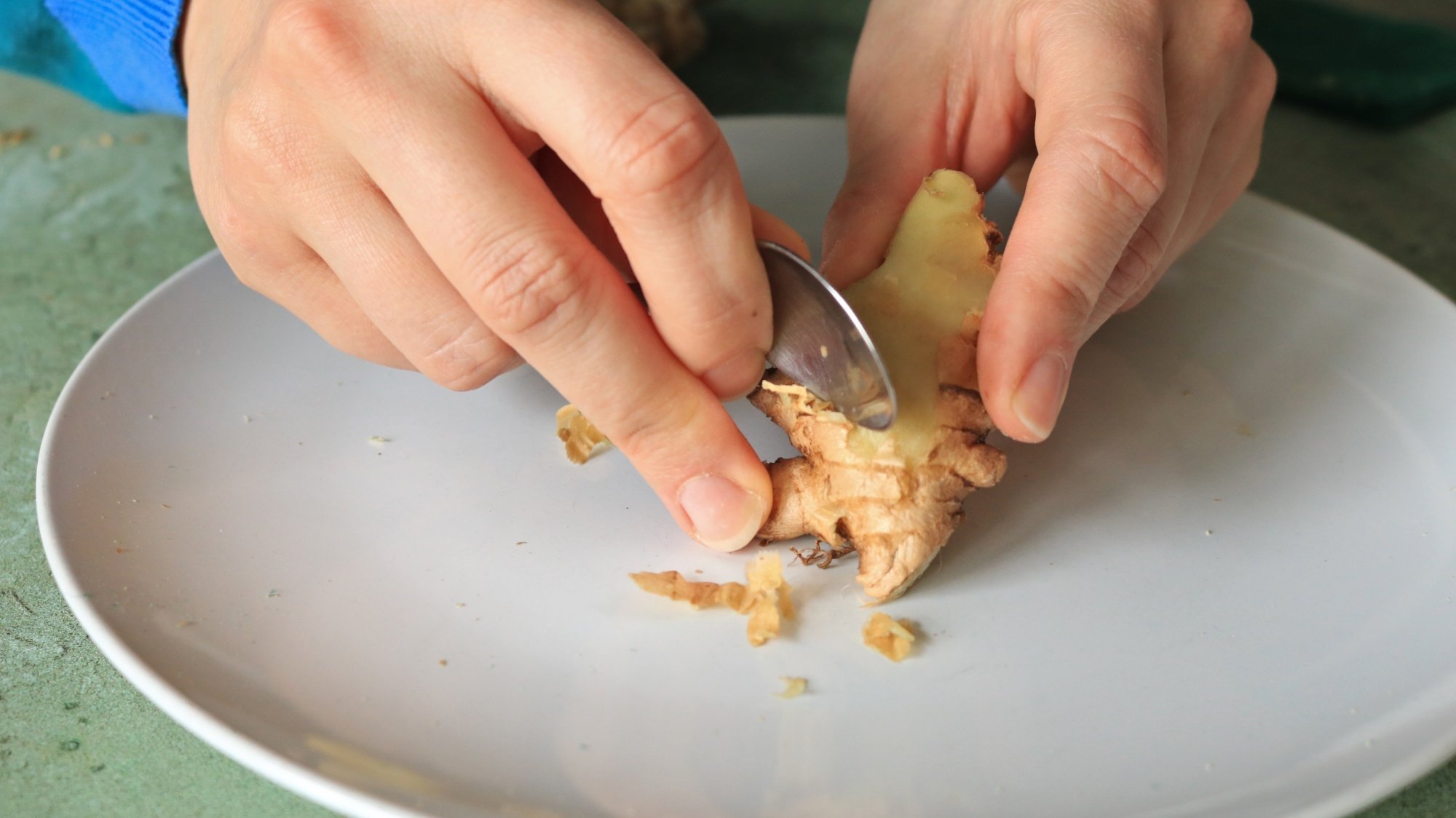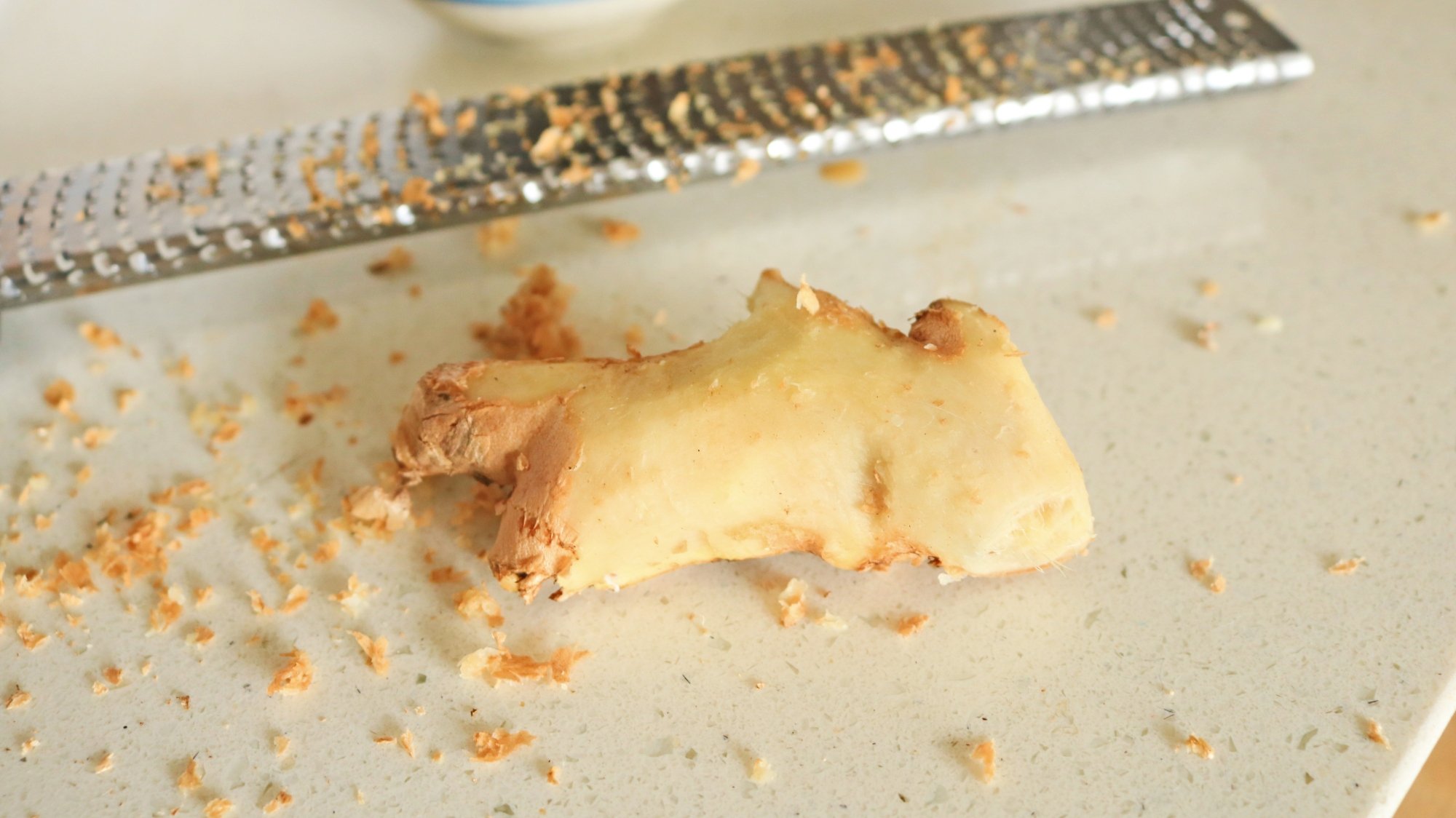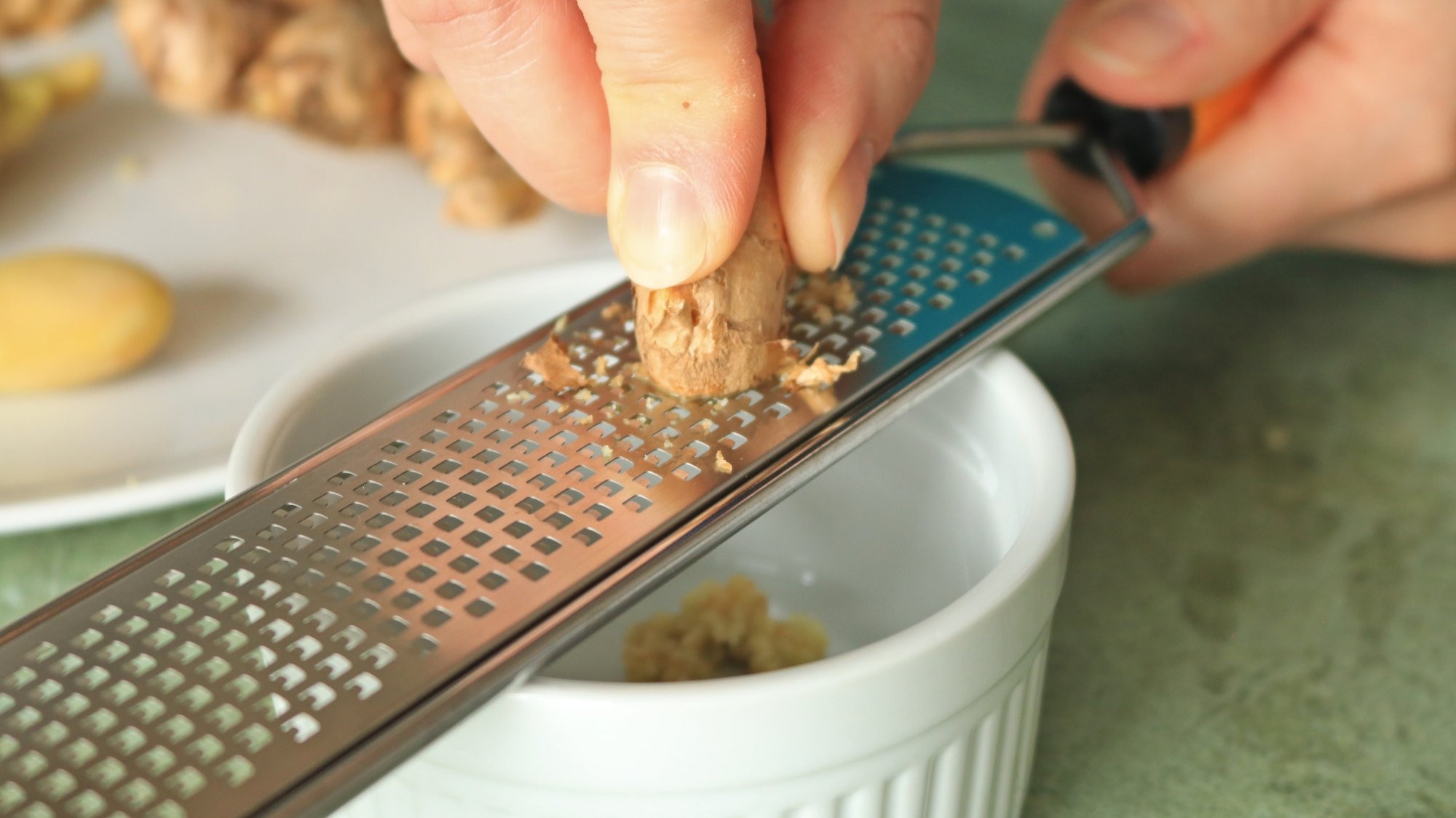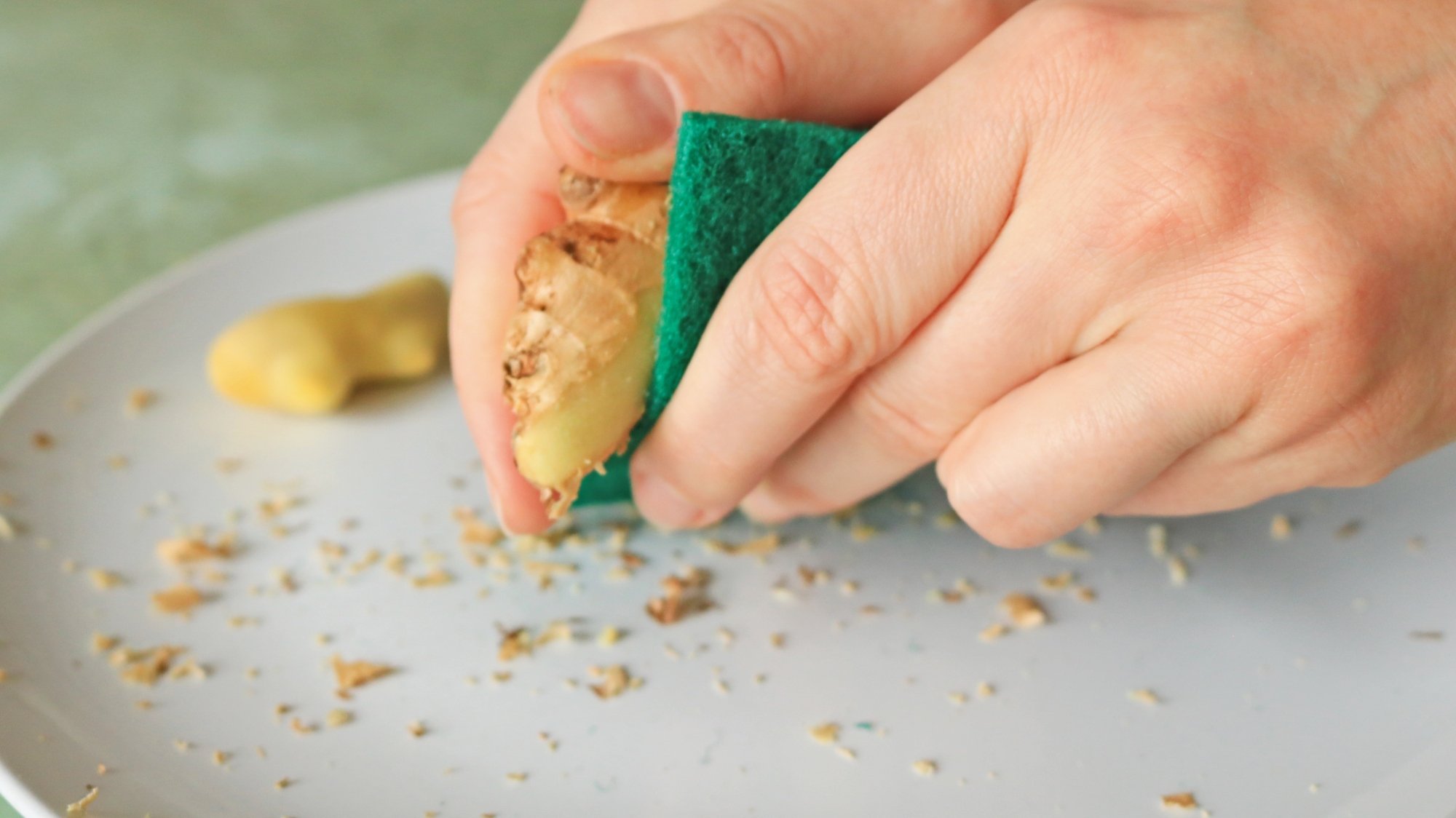When you’re looking for a punchy ingredient that brings wild brightness, heat, and aroma all its own, ginger is number one. Fresh ginger is a powerful ingredient that can transform soups, marinades, cookies, or a humble mug of tea. Like many fresh aromatics, just a dollar or two can buy you enough to last a while, especially if you know how to prepare it and freeze it. Peeling the dry, dusty skin can be the most awkward part of using ginger, and while you don’t necessarily need to, here are a few ways to do it efficiently.
Why not use a knife or peeler to peel ginger?
You can carefully peel plenty of things with a paring knife, so why not now? Ginger presents two challenges to the knife: it’s round and curvaceous, and the skin is incredibly thin and slick. Using a knife to peel ginger will inevitably result in cutting away too much of the valuable flesh along with the skin. The same goes for a potato peeler. Most peelers are too wide to adjust to the curvatures of ginger, and the angle of the blade can cut in too deep, resulting in ginger loss.
Consider how you will use the ginger
How you plan to use the ginger can help you decide which method is best for the situation. Grating ginger is best for when you want the root to disappear into a mixture. These minuscule bits are ideal for baked goods, sauces, or marinades. Chopped ginger may be more your speed, especially if you want the ginger to be a presence in the final dish. Minced or matchsticks of ginger can be best for stir fries, soups, or dumplings. Consider if you’re using the ginger root in a presentational way. Are you candying it, or slicing thin cross sections of the root with a mandolin? Then you may want to consider peeling the root in a way that preserves the natural shape.
Use a spoon

Credit: Allie Chanthorn Reinmann
This peeling method is the most popular, likely because it’s not terribly difficult and pretty much everyone has a spoon handy, even in a college dorm room. Use a metal spoon. The best ones for this purpose are small, for maneuverability around the nodes, and have a thin edge in order to easily lift the skin.
Hold the ginger securely in your non-dominant hand. With the other hand, use firm pressure to scrape against the ginger. It may take a couple tries to snag the skin, but once you do it’s easy to continue. You can scrape toward yourself or away from yourself, it’s really whatever feels right. I do a mixture of scraping down toward the plate for large sections and then scraping up toward myself for the detail work.
Take care not to carve out chunks of the ginger with the spoon. Rushing this process will only damage the flavorsome stem, so take your time. This method is ideal for chopping the root into large chunks, mincing, or matchsticks.
Use a microplane

Credit: Allie Chanthorn Reinmann
A microplane is a handy kitchen tool composed of a series of mini-blades. You can buy narrow ones or wide ones and finely grate veggies, zest citrus, or micro-shred hard cheeses. You can also prepare ginger with a microplane.
Use it to remove the skin. A microplane makes an excellent citrus zester because the blades are small and make shallow cuts, just removing the thin oil-laden layer of citrus fruit. Use a microplane to do the same with ginger, except this time the “zest” is trash. Gently rub the ginger against the lifted tines of the microplane once or twice and do a quick check to see how it went. If you need more or less force, adjust your pressure. Repeat this, checking frequently, to make your way around the stem. I find that thinner microplanes are better for getting around the body of the ginger. Mine has tines curved around the sides as well so I can use them to navigate the smaller areas. Some areas will be too tight, so you can either break these off, or use your finger nail to scrape the skin from those tiny spots (sorry if that’s gross, I’m a cave troll).

Credit: Allie Chanthorn Reinmann
Just grate it all. As I mentioned, ginger skin is really very thin. Although I wouldn’t love to eat a large strip of skin, teeny tiny grated bits won’t even register on your palate. Grate the stem, peel and all, on the microplane. Some of the skin will make it through, but you can see in the picture that a lot of the skin actually curls up on the other side and doesn’t fall through. Just brush it off into the trash. Grated ginger is delicious as an aromatic base for sauces, stir fries, and marinades. You can also use it like this for batters and icings.
Use a scrubby green pad

Credit: Allie Chanthorn Reinmann
I saw this technique used by Thomas Keller to preserve the round shape of carrots. While it’s effective, I think it’s only really necessary if you’re working at The French Laundry. But you might be whipping up Michelin star creations, so who am I to keep techniques hidden from you?
Use a green scrubby dish pad to rub off the ginger’s skin. I have a thick green pad in the picture, but the super-thin, cheap ones are better for bending and applying pressure. Apply pressure and scrub away. You’ll be able to navigate the curves of the stem with the edges of the pad and keep the beautiful roundness of the plant. Unfortunately, once the pad gets clogged up with fiber you have to use an area of fresh scrubby. So this method requires you to rinse off the pad every now and then. Use this peeling method when the appearance is a high priority, so if you’re making candied ginger planks, or dehydrated ginger chips for garnishing cocktails or an entremet. If you are, send a picture, I’d love to see it. Happy ginger peeling.

Comentarios recientes